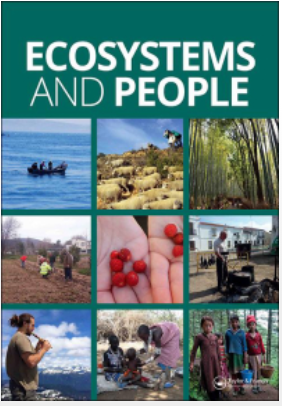Characterizing nature-based recreation preferences in a Mediterranean small island environment using crowdsourced data
IF 3.7
Q1 Agricultural and Biological Sciences
引用次数: 0
Abstract
Nature-based recreation is a key ecosystem service that contributes to positive physical and mental welfare but, at the same time, nature-based recreational activities can increase human pressure and impacts on natural areas and biodiversity. Understanding people’s preference for visiting natural settings is challenging due to data and methodological limitations. Social media data can be used to map nature-based recreation. However, variation in popularity of platforms and limitations to data accessibility are highlighting the importance of exploring and using different data sources. We analyzed complementary crowdsourced data using an automated content analysis refined by manual identification to assess nature-based recreation ecosystem services across the Maltese archipelago. A content analysis of images uploaded to Flickr between 2015 and 2021 was performed using the Google Vision machine learning algorithm to identify nature-based interactions and nature visitation patterns were modeled based on landscape characteristics, environmental variables and socio-economic parameters. Flickr data were compared and complemented with publicly available geolocated data from the iNaturalist platform. Significant difference was found between the spatial distribution of Flickr and iNaturalist data. Generalized linear models identified coastal areas, protected areas, natural habitats and accessibility via the road network as significant predictors of nature-based recreational visits. Localities with a higher percentage of people receiving old age and unemployment benefits were also positively correlated with users’ preference for nature-based recreation. Finally, we discussed how the low resource methodology developed here to identify people’s nature-based recreational preferences can be used to assess which natural areas should be prioritized for ecological restoration efforts.利用众包数据表征地中海小岛环境中基于自然的娱乐偏好
以自然为基础的娱乐活动是一项重要的生态系统服务,有助于积极的身心福祉,但与此同时,以自然为基础的娱乐活动可能会增加人类对自然区域和生物多样性的压力和影响。由于数据和方法的限制,了解人们对参观自然环境的偏好是具有挑战性的。社交媒体数据可以用来绘制基于自然的娱乐地图。然而,平台受欢迎程度的变化和数据可访问性的限制突出了探索和使用不同数据源的重要性。我们分析了互补的众包数据,使用人工识别改进的自动化内容分析来评估整个马耳他群岛基于自然的娱乐生态系统服务。利用谷歌视觉机器学习算法对2015年至2021年间上传至Flickr的图片进行内容分析,以识别基于自然的互动,并根据景观特征、环境变量和社会经济参数对自然访问模式进行建模。Flickr的数据与iNaturalist平台上的公开地理定位数据进行了比较和补充。Flickr与iNaturalist数据的空间分布存在显著差异。广义线性模型确定沿海地区、保护区、自然栖息地和通过道路网络的可达性是基于自然的休闲旅游的重要预测因素。领取老年和失业救济金的人口比例较高的地区,用户对自然娱乐的偏好也呈正相关。最后,我们讨论了在此开发的低资源方法论如何用于确定人们基于自然的娱乐偏好,以评估哪些自然区域应该优先进行生态恢复工作。
本文章由计算机程序翻译,如有差异,请以英文原文为准。
求助全文
约1分钟内获得全文
求助全文
来源期刊

Ecosystems and People
Agricultural and Biological Sciences-Ecology, Evolution, Behavior and Systematics
CiteScore
7.80
自引率
11.30%
发文量
40
审稿时长
42 weeks
期刊介绍:
Ecosystems and People is an interdisciplinary journal that addresses how biodiversity and ecosystems underpin human quality of life, and how societal activities and preferences drive changes in ecosystems. Research published in Ecosystems and People addresses human-nature relationships and social-ecological systems in a broad sense. This embraces research on biodiversity, ecosystem services, their contributions to quality of life, implications for equity and justice, and the diverse and rich ways in which people relate to nature.
 求助内容:
求助内容: 应助结果提醒方式:
应助结果提醒方式:


